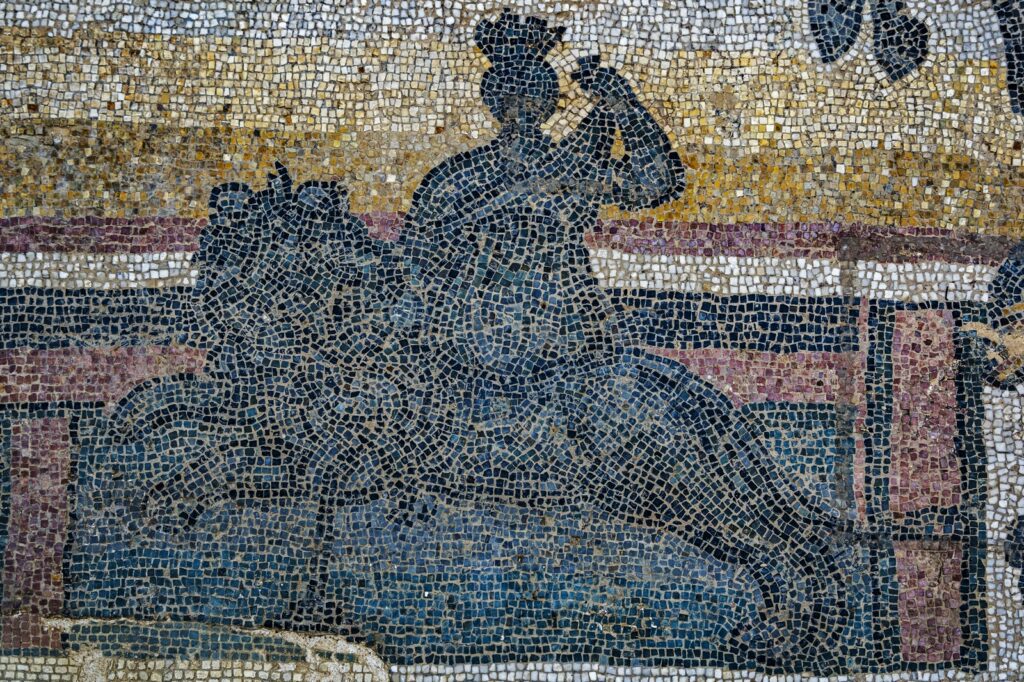Goddess of fertility and protector of nature, Cybele, also known as “Magna Mater”, the Great Mother. Her worship has distant origins, which can be traced back to the pre-Hellenic populations of Anatolia. Her oldest sanctuary was located in Phrygia, near the city of Pessinus, where a meteorite stone, the symbol of the goddess, was worshipped.
From Phrygia, the veneration of Cybele spread widely in the Attican peninsula around the 7th century BC, until it reached Rome in 204 BC when the sacred stone from Pessinus was laid in Rome in a temple located on the Palatine Hill.
The festivities celebrated in honour of Cybele were the Megalesia, which took place from 4 to 10 April, followed by sports competitions.
Artistic testimonies handed down over time have represented Cybele in different ways: with her head surrounded by a turreted crown, on a chariot pulled by lions or on a throne between two lions. In the mosaic of the biapsidal hall of the Villa del Casale she is represented from behind, on the spina, astride a lion.